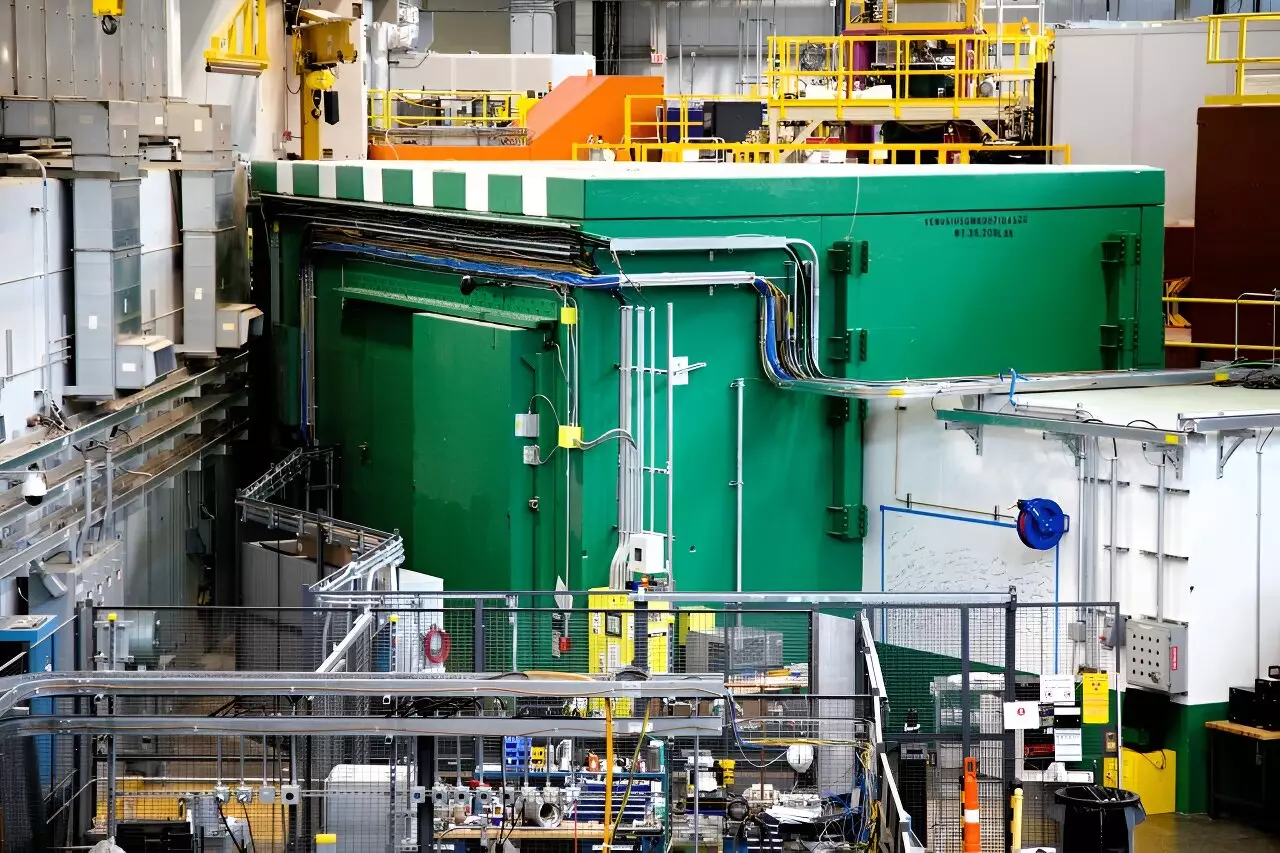The realm of scientific discovery is on the brink of a new era with the introduction of the Versatile Neutron Imaging Instrument (VENUS) at the Oak Ridge National Laboratory’s (ORNL) Spallation Neutron Source. This state-of-the-art facility has just been authorized for full-scale operation, opening doors to unprecedented possibilities in neutron imaging powered by cutting-edge artificial intelligence. With this advancement, a world of opportunities emerges for tackling complex challenges across various scientific disciplines, from energy storage to materials science.
The essence of VENUS lies in its ability to provide unique insights into the structural properties of materials at the atomic level without causing any damage to the samples being analyzed. Unlike traditional imaging techniques that may alter the very materials researchers seek to study, VENUS leverages the gentle interaction of neutrons to capture high-resolution 3D imagery. This capability is especially crucial for handling sensitive materials, including those used in pioneering energy storage solutions such as advanced batteries.
In a landscape where fast and accurate data acquisition is paramount, VENUS promises to revolutionize the research workflow. By utilizing AI algorithms, the instrument can generate 3D models from raw data in significantly fewer measurements compared to conventional methods that often require prolonged periods of observation and data collection. This efficiency not only accelerates the research process but also empowers scientists to make informed decisions quickly, ultimately enhancing productivity in various fields of study.
The potential applications of VENUS span an impressive range of scientific disciplines. In materials science, for instance, the instrument’s ability to analyze the stability and performance of building materials can lead to the development of innovative structures designed to withstand environmental stresses. Similarly, in the field of plant physiology, researchers aim to utilize neutron imaging to better understand plant responses to drought, paving the way for the creation of more resilient crops.
Neutron imaging’s non-invasive nature allows it to play a critical role in archaeological studies, such as analyzing fragile artifacts or ancient samples without compromising their integrity. The capacity to glean atomic-level details about materials opens avenues for interdisciplinary collaboration, offering researchers a robust toolset for solving diverse scientific mysteries.
The conception of VENUS dates back to 2006 when scientist Hassina Bilheux envisioned a neutron scattering instrument that could enhance imaging contrast while preserving the integrity of samples. This ambition set the stage for nearly two decades of dedicated research and collaboration. Notably, the partnership between ORNL and NASA has yielded groundbreaking results. For instance, ORNL’s expertise has aided NASA in investigating delicate moon rocks from the Apollo missions, enhancing our understanding of lunar geology and planetary formation processes.
Throughout its development, VENUS has seen contributions from numerous talented scientists and institutions. The collaboration with X-ray beamline teams, such as those from Brookhaven National Laboratory and Purdue University, has led to advanced AI algorithms that are poised to redefine how researchers engage with neutron imaging data. These innovations underscore the importance of scientific collaboration in pushing the boundaries of technology and enabling transformative research outcomes.
As construction wraps up and user beamtime is slated to commence in the latter half of 2025, the excitement surrounding VENUS is palpable. The strategic partnership between scientists across various backgrounds and disciplines underscores the collective endeavor to address some of society’s most pressing challenges. In an era marked by global crises, the capabilities of instruments like VENUS offer hope not only for scientific advancement but for real-world applications that can improve lives.
The future of science is bright, with VENUS paving the way for enhanced research methodologies and enlightening discoveries. As it stands on the cusp of operational readiness, the anticipation within the scientific community is tangible. The launch of VENUS is not just a milestone for ORNL but a significant stride toward establishing the United States as a leader in neutron imaging and a beacon of hope for intricate scientific inquiries.
The advent of the VENUS neutron imaging instrument signifies a transformative moment in the pursuit of knowledge, marking a profound shift in scientific inquiry. By combining the power of neutron imaging with artificial intelligence, the researchers at ORNL are poised to provide critical insights into a wide array of scientific challenges. As teams around the globe prepare to utilize these new capabilities, we can expect VENUS to illuminate pathways to solutions, driving innovation and progress across a multitude of fields.

